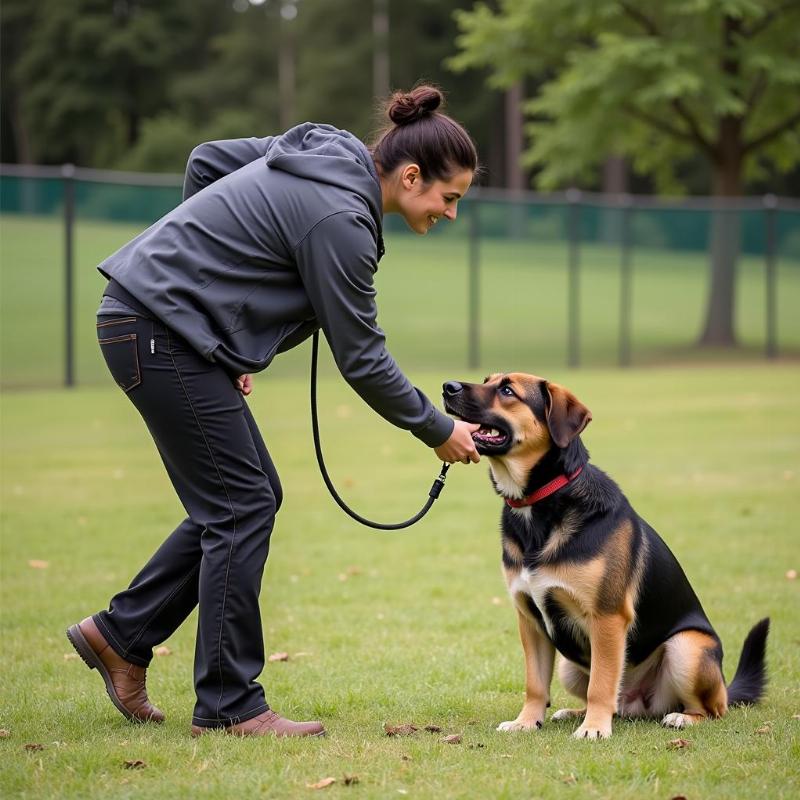Turning the Mad Dog into a Genteel Lord Chapter 14 often marks a turning point in many dog training journeys, both fictional and real. This chapter typically delves deeper into more complex behavioral issues and advanced training techniques. Understanding the nuances of canine behavior and applying appropriate training methods are essential for successfully navigating this crucial stage. In this article, we’ll explore common challenges encountered in Chapter 14, offer practical advice rooted in American Kennel Club guidelines, and provide valuable insights for transforming your “mad dog” into a well-behaved companion.
Proper socialization is crucial for preventing behavioral problems later in a dog’s life. Early exposure to various sights, sounds, people, and other animals helps puppies develop into confident, well-adjusted adults. This is particularly important for breeds known for their protective instincts or high energy levels. Ignoring this crucial aspect of development can lead to the very issues often depicted in Chapter 14 of dog training narratives.
Consistency is key when it comes to training. Dogs thrive on predictable routines and clear expectations. Ensure everyone in the household is on the same page regarding training methods and commands. This avoids confusion for the dog and reinforces the desired behaviors.
 Advanced Dog Training in the US
Advanced Dog Training in the US
Positive reinforcement techniques are widely recognized as the most effective and humane way to train dogs. Rewarding desired behaviors with treats, praise, or toys encourages the dog to repeat those actions. Avoid punishment-based methods, which can create fear and anxiety, potentially exacerbating behavioral issues.
Addressing aggression, whether towards other dogs or people, often requires professional guidance. Consult with a certified dog trainer or veterinary behaviorist experienced in dealing with aggression. They can assess the specific triggers and develop a tailored behavior modification plan.
Separation anxiety is a common problem that can manifest in destructive behaviors, excessive barking, or house soiling. Establishing a consistent routine, providing plenty of mental and physical stimulation, and creating a safe and comfortable space for the dog can help alleviate separation anxiety.
Fear-based behaviors, such as cowering, trembling, or hiding, can be triggered by various stimuli, including loud noises, unfamiliar people, or specific objects. Gradual desensitization and counter-conditioning, under the guidance of a professional, can help the dog overcome these fears.
Understanding Canine Body Language in Chapter 14
Interpreting a dog’s body language is crucial for understanding their emotional state and addressing underlying issues. Observe their posture, facial expressions, tail wags, and ear position for clues about their feelings. This is particularly important in Chapter 14 scenarios where complex behaviors are often addressed.
Advanced Obedience Training Techniques
Chapter 14 often introduces more advanced obedience commands and training techniques. Focus on building a strong foundation of basic obedience before progressing to more complex skills. This ensures the dog understands the fundamental principles of training and can readily adapt to new challenges.
Nutrition and its Impact on Behavior
A balanced diet plays a vital role in a dog’s overall health and well-being, including their behavior. Ensure your dog receives a high-quality diet appropriate for their breed, age, and activity level. Consult with your veterinarian to determine the best nutritional plan for your dog’s specific needs.
Conclusion: Achieving Harmony in Chapter 14 and Beyond
Turning the mad dog into a genteel lord in Chapter 14 and beyond requires patience, consistency, and a deep understanding of canine behavior. By applying positive reinforcement techniques, addressing underlying issues, and seeking professional guidance when necessary, you can foster a strong bond with your dog and enjoy a harmonious relationship.
FAQ:
- What are the common signs of aggression in dogs? Common signs include growling, snarling, snapping, biting, and lunging.
- How can I prevent separation anxiety in my dog? Establish a consistent routine, provide plenty of mental and physical stimulation, and create a safe and comfortable space.
- What are the best methods for training a fearful dog? Gradual desensitization and counter-conditioning, under the guidance of a professional, are often effective.
- What is the importance of socialization in dog training? Early socialization helps puppies develop into confident, well-adjusted adults, preventing behavioral problems later in life.
- What should I do if my dog exhibits aggressive behavior? Consult with a certified dog trainer or veterinary behaviorist experienced in dealing with aggression.
Beautdogs.us is your premier destination for all things dog-related in the USA. We offer expert advice on dog breeds, care, and product recommendations. Whether you’re a first-time dog owner or a seasoned expert, Beautdogs.us is your trusted source for comprehensive and engaging information on all aspects of dog companionship. Contact us at [email protected] or +1 501-555-7529 for any questions or inquiries.